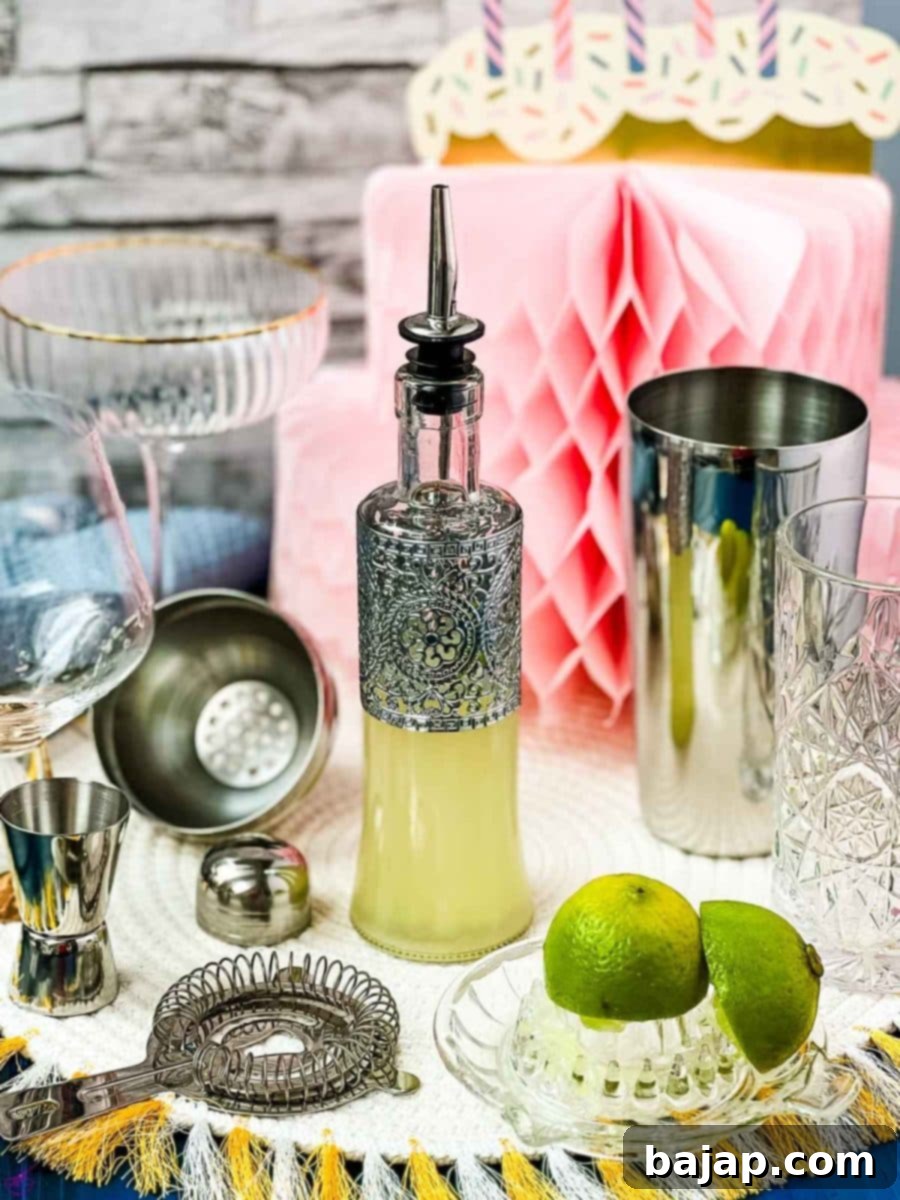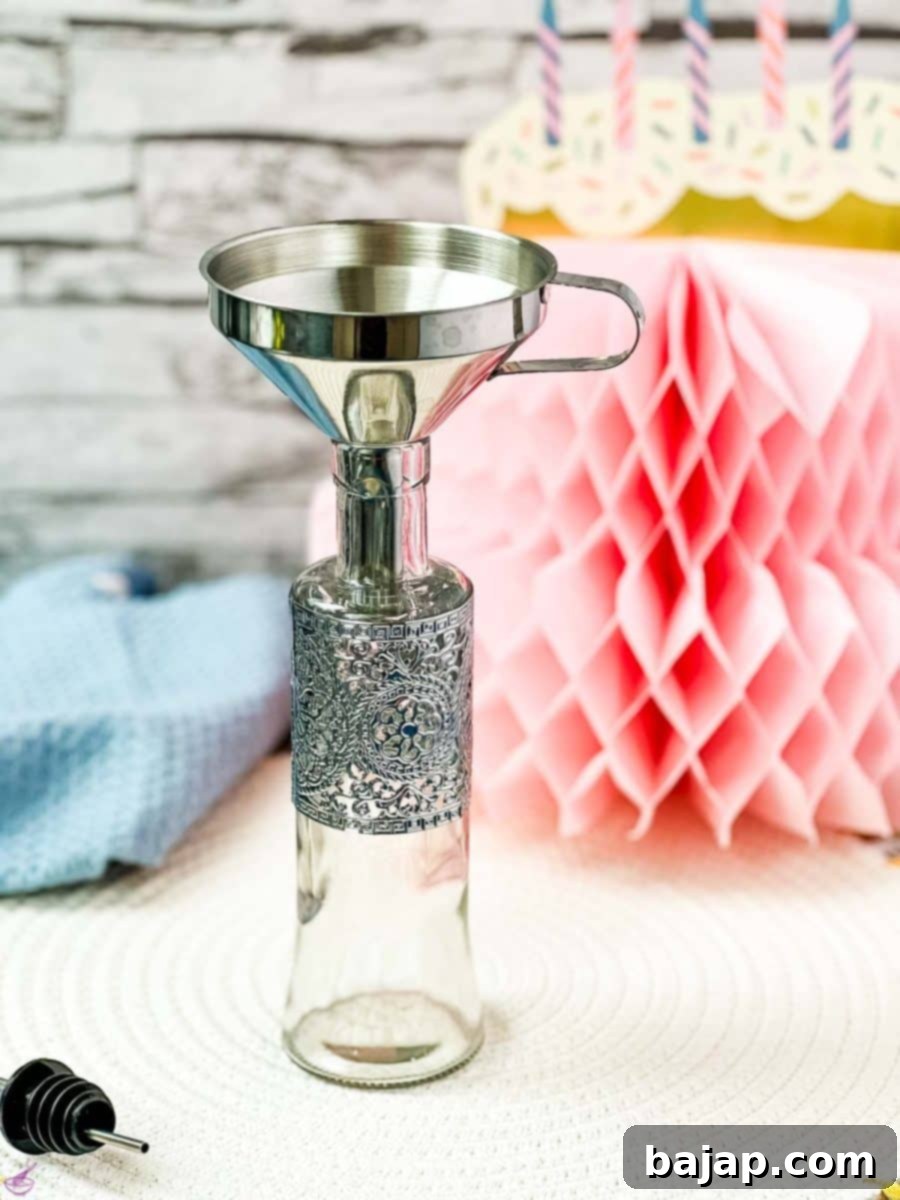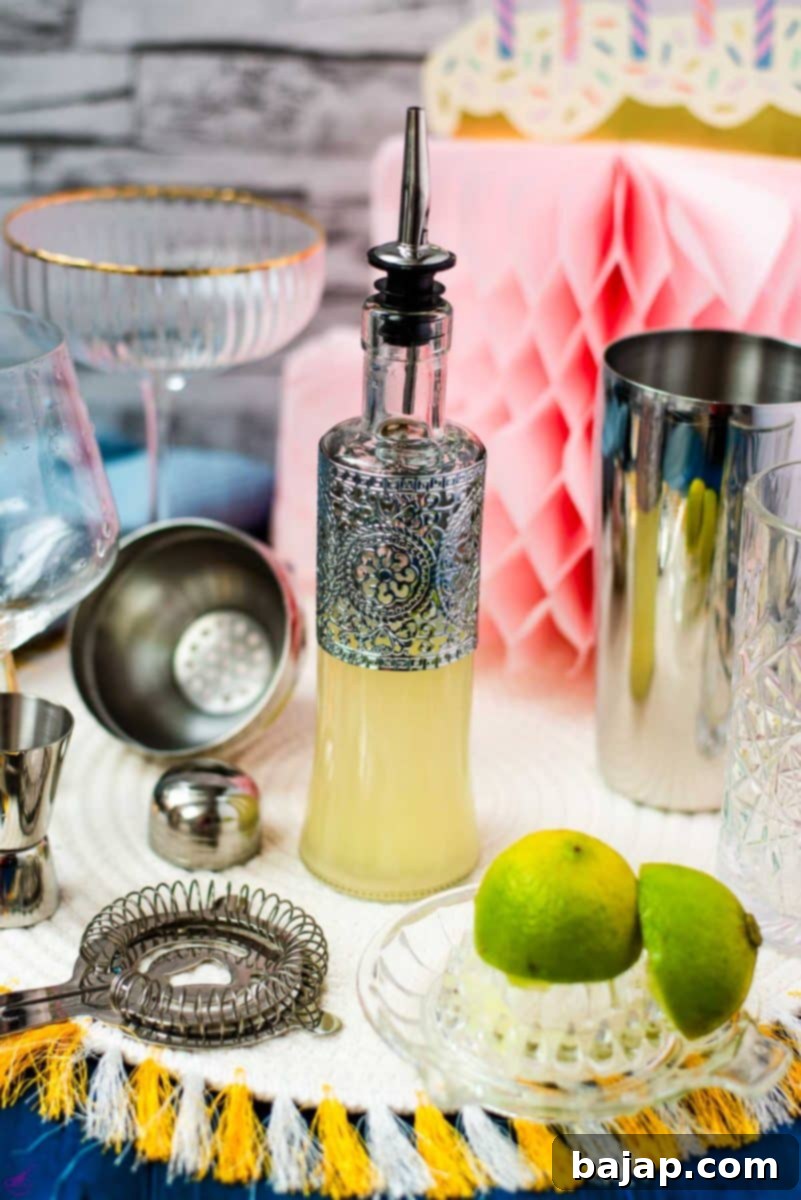The Ultimate Guide to Freshly Squeezed Lime Juice: Benefits, Uses & How to Make It
There’s an undeniable magic that a splash of fresh lime juice brings to both your favorite cocktails and everyday cuisine. Its bright, tangy, and subtly sweet profile can instantly elevate a dish, adding a burst of zest that no other ingredient quite matches. Whether you’re perfecting a batch of zesty tacos, shaking up a vibrant pomegranate margarita, or simply looking to invigorate a glass of water, the pure essence of freshly squeezed lime juice is often the secret ingredient that ties everything together, delivering that perfect “kiss” of flavor.

Beyond its incredible flavor, the process of preparing fresh lime juice is surprisingly simple, requiring just one core ingredient: limes! Squeezing a batch of lime juice ahead of time can be a true game-changer, especially when hosting. I often make a decent quantity of both fresh lime juice and fresh lemon juice when I know guests are coming over. This allows me to spend more quality time with my family and friends, savoring the moments, rather than being tied to the bar or kitchen, squeezing limes on demand. It’s a small step that makes a huge difference in enjoying the festivities.
But the benefits of fresh lime juice extend far beyond taste and convenience. This vibrant citrus fruit is a nutritional powerhouse, brimming with essential vitamins and potent antioxidants. It’s particularly rich in Vitamin C, a crucial nutrient known for its wide array of health advantages. Incorporating fresh lime juice into your diet has been scientifically linked to boosting immunity, reducing risk factors for heart disease, aiding in the prevention of kidney stones, enhancing iron absorption, and even promoting healthier, more radiant skin. Furthermore, you gain all this incredible flavor and nutritional value without any unwanted added sugars or artificial ingredients often found in processed alternatives.
Fresh Lime Juice vs. Bottled Lime Juice: The Zest Debate
At first glance, one might assume that fresh lime juice and bottled lime juice are interchangeable. However, for those who truly appreciate quality and flavor, there are distinct differences that set them worlds apart. Understanding these key distinctions can significantly impact your culinary and cocktail experiences.
The most noticeable difference lies in their shelf life. Freshly squeezed lime juice, without any preservatives, typically retains its peak flavor for only a day when refrigerated. In stark contrast, bottled lime juice boasts a shelf life of several months, sometimes even longer. This extended longevity is due to the addition of preservatives, artificial flavors, and sometimes even added sugars. While these additives ensure stability, they often compromise the authentic taste, leading to a flavor profile that can taste artificial, dull, or simply “off” compared to the vibrant, natural tang of a freshly squeezed lime.
Certainly, bottled lime juice offers a degree of convenience and is often more cost-effective upfront than purchasing fresh limes. It can be a practical option for situations where fresh limes are unavailable or when precise measurements are less critical. However, for those who prioritize the true essence and health benefits of this versatile citrus, there’s simply no substitute for the real thing. The subtle nuances, aromatic oils, and pure, crisp flavor of fresh lime juice deliver an unparalleled sensory experience that bottled versions simply cannot replicate.
How Much Juice is in One Lime? Maximizing Your Yield
On average, a single medium-sized lime will yield approximately one to two tablespoons of juice. However, this amount can vary depending on several factors, including the size, ripeness, and specific variety of the lime. Larger, riper limes tend to be juicier, while smaller or firmer ones might yield less. Generally, Persian limes (the most common variety found in grocery stores) are larger and juicier than the smaller, more aromatic Key limes.
To maximize the amount of juice you extract from each lime, a simple yet effective tip is to roll the lime firmly on a counter or cutting board before slicing it. Applying gentle pressure while rolling helps to break down the internal membranes and release more juice. You can also briefly microwave the lime for 10-20 seconds (depending on size) to warm it slightly, which can further aid in juice extraction. These small preparatory steps can make a big difference in your overall yield, ensuring you get every drop of that precious liquid gold.
Unlocking the Power of Lime: Health Benefits of Fresh Lime Juice
Fresh lime juice is much more than just a flavor enhancer; it’s a potent source of essential vitamins, minerals, and antioxidants that can significantly contribute to overall health and well-being. Incorporating even a small amount, such as a squeeze into your morning water, can kickstart your day with a multitude of benefits.
- Rich in Vitamin C: Limes are an excellent source of Vitamin C, a powerful antioxidant vital for a healthy immune system. It helps protect your body against infections and illnesses, making you more resilient to colds and flu.
- Boosts Immunity: The high Vitamin C content, coupled with other antioxidants, strengthens your body’s natural defenses, helping it fight off pathogens and reduce the duration of sickness.
- Promotes Healthy Skin: Vitamin C is crucial for collagen production, which keeps skin firm, supple, and youthful. The antioxidants in lime juice also combat free radicals, which can cause premature aging, helping to rejuvenate your skin from within.
- Aids Digestion: The citric acid in lime juice can help stimulate digestive enzymes, promoting healthier digestion and easing issues like indigestion and constipation. Its acidic nature can also help break down food more efficiently.
- Supports Heart Health: Limes contain compounds that may help lower blood pressure and reduce levels of “bad” LDL cholesterol. Potassium in lime juice also contributes to heart health by balancing fluid levels and relaxing blood vessel walls.
- Prevents Kidney Stones: Citric acid is a natural inhibitor of kidney stones. Regular consumption of lime juice can increase citrate levels in urine, which helps prevent the formation of calcium oxalate stones.
- Enhances Iron Absorption: Vitamin C significantly increases the absorption of non-heme iron (iron from plant-based foods), making lime juice an excellent addition to vegetarian or vegan meals to boost iron intake.
- Fights Inflammation: Limes possess anti-inflammatory properties that can help reduce inflammation throughout the body, potentially alleviating symptoms of conditions like arthritis.
- Aids Weight Management: The citric acid in lime juice can help boost metabolism, and when combined with water, it can promote a feeling of fullness, reducing overall calorie intake. It’s also a low-calorie, sugar-free way to add flavor to your drinks.
- May Help Prevent Cancer: The various antioxidants and flavonoids found in limes have been studied for their potential to inhibit cancer cell growth and offer protection against certain types of cancer.
With such a comprehensive range of health benefits, adding fresh lime juice to your daily routine is a simple, delicious, and refreshing way to support a healthier lifestyle.
🥘 Ingredients for Fresh Lime Juice

- Limes (quantity depends on how much juice you need)
For specific quantities used in the recipe card below, please refer to the recipe card.
🔪 Instructions for Making Fresh Lime Juice
Making fresh lime juice is incredibly straightforward, especially if you have the right tools. Here’s how to do it:
- Prepare the Limes: Start by rolling each lime firmly on your kitchen counter for about 10-15 seconds. This helps break down the internal membranes, making them easier to juice. Then, simply cut each lime in half.
- Extract the Juice: Using a lemon squeezer or a citrus juicer, firmly squeeze the juice from each lime half into a bowl or directly into your serving bottle. Be sure to collect all the juice and avoid any seeds falling in. For larger batches, an electric citrus juicer can be a great time-saver.
- Filter (Optional): If you prefer a pulp-free juice, you can strain the freshly squeezed lime juice through a fine-mesh sieve to remove any pulp or seeds.
- Bottle and Store: For easy storage and serving, it’s highly recommended to use a funnel to pour the freshly squeezed lime juice into a clean, airtight bottle. Bottles with a pour spout are particularly convenient, allowing for quick and mess-free pouring when mixing cocktails or adding to dishes.

Prepping your lime juice this way ensures that when it’s time to whip up cocktails at your home bar, your job is significantly easier and quicker, allowing you to truly enjoy your creations and the company.
🍽 Essential Equipment
Having the right tools can make the process of squeezing limes effortless and efficient:
- Lemon Squeezer or Citrus Juicer (manual or electric)
- Airtight Bottle (for storage)
- Funnel (for easy transfer to bottles)
- Liquor Pourer Spout (optional, but highly recommended for cocktail mixing)
🌡 Storage & Pro Tips for Fresh Lime Juice
While fresh lime juice offers unparalleled flavor, its delicate nature means it has a shorter shelf life compared to its bottled counterparts. Understanding how to properly store it and employ smart juicing techniques can help you get the most out of your limes.
- Short-Term Storage (Refrigeration): Freshly squeezed lime juice will generally last up to a day in the refrigerator before its flavor begins to significantly degrade. Store it in an airtight container or a tightly sealed bottle to prevent oxidation and absorption of other fridge odors. Aim to use it within 24 hours for the best taste and vibrancy.
- Long-Term Storage (Freezing): The best way to extend the shelf life of fresh lime juice is by freezing it! This method allows you to enjoy fresh lime flavor for several months.
- Ice Cube Trays: Pour your freshly squeezed lime juice directly into ice cube trays. Once frozen solid, transfer the lime juice cubes to a freezer-safe bag or container. This makes it incredibly convenient to use a single cube or two as needed, without thawing the entire batch.
- Thawing: When you’re ready to use it, simply pop a frozen lime cube directly into your cocktail shaker, a glass of water, or a simmering dish. It will thaw quickly and retain much of its original fresh flavor.
- Maximizing Juice Yield: As mentioned earlier, always roll your limes (or any citrus fruit) firmly on the kitchen counter before cutting and squeezing. This crucial step helps to break down the internal membranes of the fruit, making it much easier to extract every last drop of juice. You’ll be surprised by how much more juice you can get!
- Selecting the Best Limes: Look for limes that are firm, heavy for their size, and have a smooth, bright green skin. A heavier lime usually indicates a juicier interior. Avoid limes that are discolored, soft, or have wrinkled skin.

🙋🏻 Frequently Asked Questions About Fresh Lime Juice
Yes, freshly squeezed lime juice has a relatively short shelf life due to its natural composition and lack of preservatives. It typically starts to lose its vibrant flavor and zest within about a day when stored in the refrigerator. After a few days, it can develop an off-flavor and eventually mold. Bottled lime juice, on the other hand, can last for several months in the pantry and even beyond its “best by” date after opening, thanks to the added preservatives. However, its flavor profile may not be as fresh or intense as homemade juice.
Absolutely! Freezing is the best way to extend the shelf life of fresh lime juice and keep its bright flavor intact for future use. To do this, simply squeeze your fresh juice and pour it into an ice cube tray. Once the cubes are frozen solid, transfer them to an airtight freezer-safe bag or container. Frozen lime juice will last for several months (up to 3-4 months) in the freezer. When you’re ready to use it, you can simply pop a lime ice cube directly into your cocktail, smoothie, or recipe, allowing it to thaw and blend in.
If you don’t have fresh lime juice on hand or simply prefer a different flavor, there are several good substitutes for most recipes and cocktails. The most common and often best alternative is fresh lemon juice, which offers a similar tangy acidity, though with a slightly different aromatic profile. For some applications, particularly in baking or when a milder citrus note is desired, fresh orange juice can also work. If you need a substitute with a similar tartness but without the citrus, white vinegar can sometimes be used in very small quantities for savory dishes, but it lacks the fresh fruit flavor. Ultimately, if a recipe calls for fresh juice, another fresh citrus fruit like lemon or even grapefruit will generally provide the best results.
Fresh lime juice is an indispensable ingredient in a vast number of classic and contemporary cocktails, prized for its essential acidity and bright, refreshing flavor balance. It forms the backbone of countless popular drinks, including:
- Margaritas: Perhaps the most iconic lime cocktail, it perfectly balances tequila, triple sec, and fresh lime juice.
- Daiquiris: A simple yet elegant mix of rum, lime juice, and simple syrup, often enjoyed frozen or on the rocks.
- Mojitos: Fresh mint, lime juice, rum, sugar, and soda water combine for an incredibly refreshing experience.
- Gin and Tonic: While sometimes made with lemon, a wedge or squeeze of fresh lime juice brightens a classic G&T beautifully.
- Caipirinhas: Brazil’s national cocktail, featuring Cachaça, sugar, and muddled limes.
- Gimlets: A crisp blend of gin (or vodka) and lime juice.
- Pisco Sours: A Peruvian and Chilean favorite with Pisco, lime juice, simple syrup, egg white, and bitters.
Its versatility makes it a staple for any home bartender aiming for authentic and delicious results.
When selecting limes, look for ones that are bright green, feel heavy for their size, and are firm but slightly soft when gently squeezed. A heavier lime indicates more juice content. Avoid limes with hard spots, significant discoloration (unless it’s a ripe Key lime which can be yellowish), or wrinkled skin, as these are signs of dehydration or over-ripeness, leading to less juice and potentially a less vibrant flavor.
Other Recipes for You to Try
- How Do You Make A Frozen Strawberry Daiquiri
- Refreshing Lavender Daiquiri
- Refreshing Cucumber Gin And Tonic
- Homemade Vodka Sidecar
- Lovely Lavender Spritz Cocktail
If you make this recipe or use fresh lime juice in your creations, let me know how you liked it by ★★★★★ star rating it and leaving a comment below. Your feedback would be absolutely awesome! You can also sign up for our Newsletter or follow me on Pinterest or Instagram and share your creation with me. Just tag me @combinegoodflavors and hashtag #combinegoodflavors, so I don’t miss it.
📖 Recipe: Fresh Squeezed Lime Juice

Fresh Squeezed Lime Juice
Nora
Save RecipeSaved!
Pin Recipe
Equipment
-
1 Lemon squeezer
-
1 Bottle
-
1 Funnel
Ingredients
- 22 Limes
Optional
- Water
- Sugar
Instructions
-
Roll the Limes firmly on a counter, then cut each in half.22 Limes
-
Using a citrus juicer or squeezer, extract the juice from each lime half into a bowl. Strain if you prefer no pulp.
-
Using a funnel, carefully pour the freshly squeezed lime juice into a clean bottle for storage.
-
Seal the bottle tightly and store in the refrigerator for up to 24 hours, or freeze for longer storage.
-
Optionally, you can dilute the lime juice with Water or sweeten it to your taste with Sugar before storing or serving.Water, Sugar
Nutrition values are estimates only, using online calculators. Please verify using your own data.

🤎 You might also like
- Refreshing Lavender Daiquiri
- How do you make a Frozen Strawberry Daiquiri
- Matcha White Chocolate Chip Cookies
- The Complete Guide to Gin & Tonic
⛑️ Food Safety
- Cook to a minimum temperature of 165 °F (74 °C)
- Do not use the same utensils on cooked food, that previously touched raw meat
- Wash hands after touching raw meat
- Don’t leave food sitting out at room temperature for extended periods
- Never leave cooking food unattended
- Use oils with high smoking point to avoid harmful compounds
- Always have good ventilation when using a gas stove
For further information, check Safe Food Handling – FDA.
